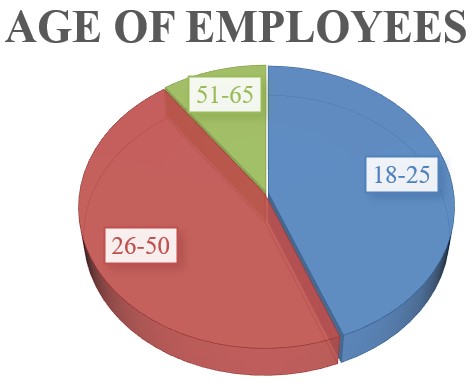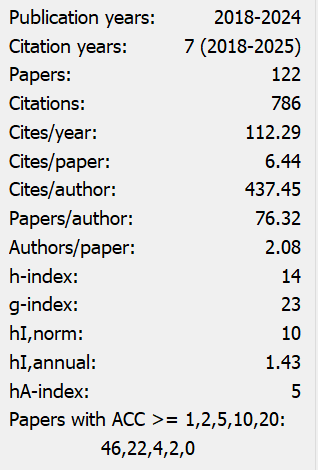The Role of Diversity in Company Productivity: The Case of the Bank Sector in Kosovo
Abstract
Importance to identifying how diversity affects individual and group productivity in todays globalized world is increasing. The purpose of this research lies in the phenomenon of diversity and further analysis of the impact that diversity has on the work environment. To conduct this research, I interviewed 20 managers and 30 employees of the banking sector regarding the composition of their staff with emphasis on diversity. The data were processed using the statistical analysis of SPSS program. Human resources have positively influenced the increase of success, productivity and has eased problem solving, bettered performance, training, salary, and diversity of employees. This study will have practical significance in the easier approach of problems in human resource management and their motivation.
References
Chavez, C. I., & Weisinger, J. Y. (2008). Beyond diversity training: A social infusion for cultural inclusion. Human resource management: Published in cooperation with the school of business administration, the University of Michigan and in alliance with the Society of Human Resources Management, 47(2), 331-350. https://doi.org/10.1002/hrm.20215
DiTomaso, N., Post, C., & Parks-Yancy, R. (2007). Workforce diversity and inequality: ower, status, and numbers. Annual Review of Sociology, 33(1), 473-501.
Janis, I. L. (1972). Victims of Groupthink: A psychological study of foreign-policy decisions and fiascoes. https://doi.org/10.1146/annurev.soc.33.040406.131805
Kremer, M. (1993). The O-ring theory of economic development. The Quarterly Journal of Economics, 108(3), 551-575. https://doi.org/10.2307/2118400
Kunze, F., Boehm, S., & Bruch, H. (2013). Organizational performance consequences of age diversity: Inspecting the role of diversity‐friendly HR policies and top managers’ negative age stereotypes. Journal of Management Studies, 50(3), 413-442. https://doi.org/10.1111/joms.12016
Lazear, E. P. (1998). Personnel economics for managers (p. 316). New York: Wiley.
Lazear, E. P. (1999). Globalisation and the market for team‐mates. The Economic Journal, 109(454), 15-40. https://doi.org/10.1111/1468-0297.00414
Mfene, P. N. (2010). Enhancing supervisor and subordinate communication in diversity management. Africa Insight, 40(2), 141-152. https://hdl.handle.net/10520/EJC17639
Perkins, L. A., Thomas, K. M., & Taylor, G. A. (2000). Advertising and recruitment: Marketing to minorities. Psychology & Marketing, 17(3), 235-255. https://doi.org/10.1002/(SICI)1520-6793(200003)17:3<235:: AID-MAR3>3.0.CO;2-#
Pless, N., & Maak, T. (2004). Building an inclusive diversity culture: Principles, processes and practice. Journal of business ethics, 54(2), 129-147. https://doi.org/10.1007/s10551-004-9465-8
Riccò, R. (2012). Utilizing a new human relations framework to leverage workforce diversity. In Handbook of research on workforce diversity in a global society: Technologies and concepts (pp. 440-462). IGI Global. https://doi.org/10.4018/978-1-4666-1812-1.ch026
Richard, O. C., Barnett, T., Dwyer, S., & Chadwick, K. (2004). Cultural diversity in management, firm performance, and the moderating role of entrepreneurial orientation dimensions. Academy of Management Journal, 47(2), 255-266. https://doi.org/10.5465/20159576
Singh, B., Winkel, D. E., & Selvarajan, T. T. (2013). Managing diversity at work: Does psychological safety hold the key to racial differences in employee performance?. Journal of Occupational and Organizational Psychology, 86(2), 242-263. https://doi.org/10.1111/joop.12015
Slater, S. F., Weigand, R. A., & Zwirlein, T. J. (2008). The business case for commitment to diversity. Business horizons, 51(3), 201-209. https://doi.org/10.1016/j.bushor.2008.01.003
Sung, S. Y., & Choi, J. N. (2021). Contingent effects of workforce diversity on firm innovation: high-tech industry and market turbulence as critical environmental contingencies. The International Journal of Human Resource Management, 32(9), 1986-2012. https://doi.org/10.1080/09585192.2019.1579243
Van Knippenberg, D., De Dreu, C. K., & Homan, A. C. (2004). Workgroup diversity and groupperformance: an integrative model and research agenda”,Journal of Applied Psychology, Vol. 89No. 6, pp. 1008-1022 https://doi.org/10.1037/0021-9010.89.6.1008
Williams, K. Y., & O’Reilly, C. A. (1998). Demography and diversity in organizations: a review of 40 years of research. Research in Organizational Behavior, 20, 77-140.


This work is licensed under a Creative Commons Attribution 4.0 International License.
Copyright for this article is retained by the author(s), with first publication rights granted to the journal.
This is an open-access article distributed under the terms and conditions of the Creative Commons Attribution license (http://creativecommons.org/licenses/by/4.0/).


























